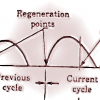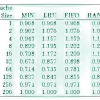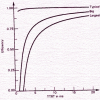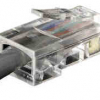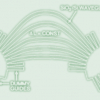Publication
During overload, most networks drop packets due to buffer unavailability. The resulting timeouts at the source provide an implicit mechanism to convey congestion signals from the n...
Publication
The authors were part of an eighteen-member international delegation of data communications professionals that recently visited the People's Republic of China. This report on ...
112
click to vote
Publication
Congestion avoidance mechanisms allow a network to operate in the optimal region of low delay and high throughput, thereby, preventing the network from becoming congested. This is ...
Publication
We propose a scheme for congestion avoidance in networks using a connectionless protocol at the network layer. The scheme uses a minimal amount of feedback from the network to the ...
Publication
The size of computer networks, along with their bandwidths, is growing exponentially. To support these large, high-speed networks, it is neccessary to be able to forward packets in...
103
click to vote
Publication
Popular myths that cheaper memory, high-speed links and high-speed processors will solve the problem of congestion in computer networks are shown to be false. A simple definition f...
Publication
The performance of Fiber-Distributed Data Interface (FDDI) depends upon several workload parameters; for example; the arrival pattern, frame size, and configuration parameters, suc...
Publication
Using a trace of address references, we compared the efficiency of several different hashing functions, such as cyclic redundancy checking (CRC) polynomials, Fletcher checksum, fol...
102
click to vote
Publication
Weaknesses in several recently proposed ideas about congestion control and avoidance in high-speed netwroks are identified. Both sides of the debate concerning prior reservation of...
Publication
This paper represents the technical core of a pre-competitive consortium formed by AT&T, DEC and MIT to study the technology, architecture and applications of wide-band all-opt...

